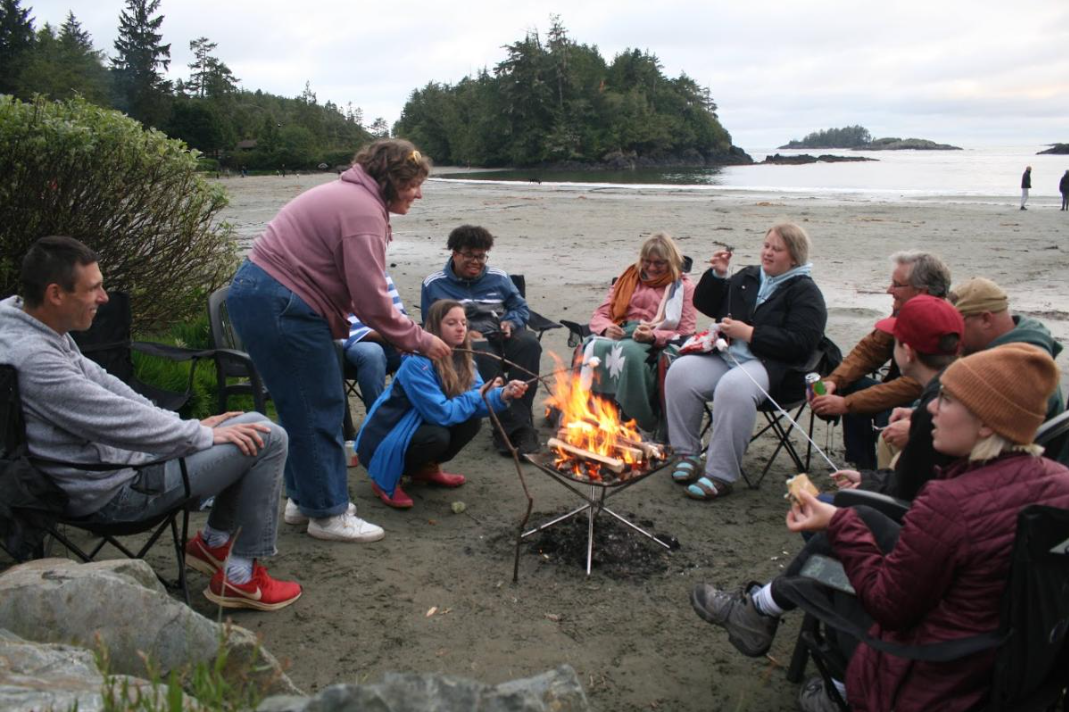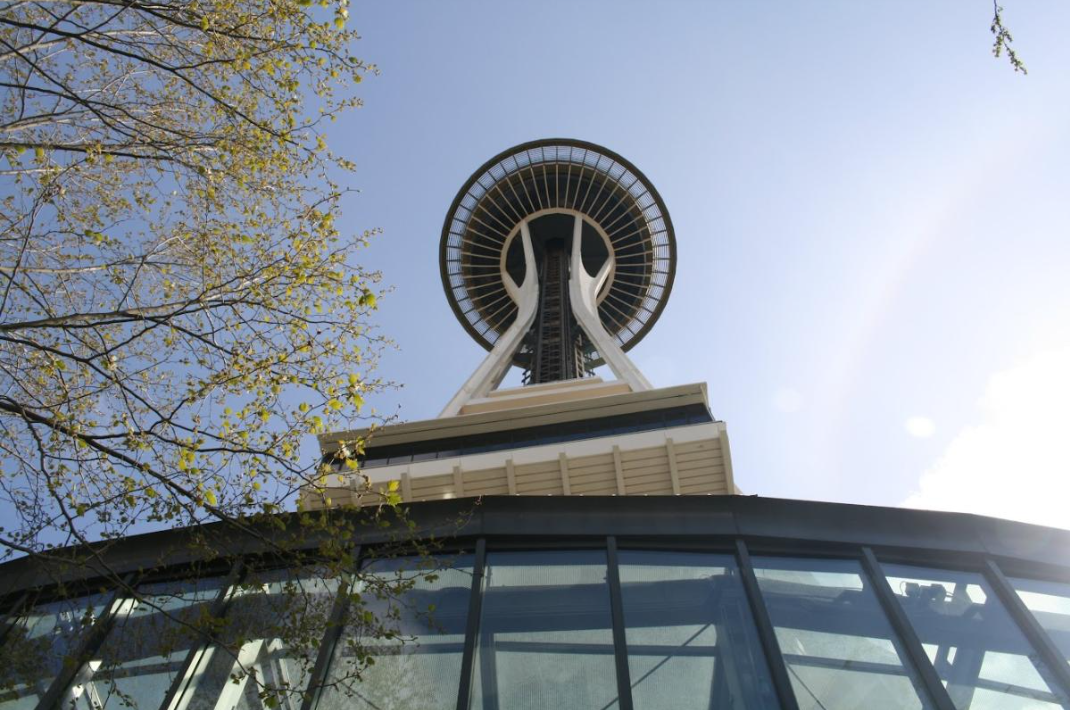Landscape architecture students explore Pacific Northwest for design inspiration
Landscape architecture students explore Pacific Northwest for design inspiration

The University of Kentucky College of Agriculture, Food and Environment’s Department of Landscape Architecture recently hosted a two-week study abroad trip to cities and natural parks across the Pacific Northwest.

Students visit Space Needle Park. Photo by Felix Lowery, senior landscape architecture major.
UK faculty and 10 undergraduate students began the trip in Seattle with visits to Freeway Park, Gas Works Park, Space Needle Park, Chophouse Row and Bell Street Park. The group visited Olympic National Park with a stay at Lake Crescent, Hoh Rainforest, and Lake Quinault before making their way to Portland to visit stops such as South Waterfront, Adidas Village, Japanese Garden, Fountain Park and Lovejoy Plaza. The students then traveled to Vancouver, British Columbia, to see the Olympic Village, Granville Public Market and Concord Pacific Place. From Vancouver, the group took a ferry to Vancouver Island to visit the remote Pacific coast area of Tofino.
In addition to visiting over 100 notable design projects in the cities, the itinerary made time for numerous experiences in the natural beauty of the Pacific Northwest with scheduled hikes, kayaking excursions, trail walks and biking tours.
UK associate professor of landscape architecture Ryan Hargrove said this planned duality between urban stops and natural stops served a purpose.
“There's this really interesting interplay there between large urban areas and the surrounding kind of natural environment and how they inspire each other,” he said. “We're looking at how some of the urban areas are inspired by nature, but also the impact that these urban areas have both positive and negative on the natural areas as well.”

Example of waterfall designed for one of the urban sites students visited. Photo by Felix Lowery, senior landscape architecture major.

Example of a waterfall at one the natural sites students visited. Photo by Felix Lowery, senior landscape architecture major.
Hargrove said that many of the landscape design projects in the Pacific Northwest act as an example for design across the rest of the country.
“They’re known for this kind of progressive design in terms of landscape architecture. They're always kind of on the forefront of innovative material use, and a lot of places ultimately looked at that part of the country for inspiration, so it's really cool,” Hargrove said.
Hargrove and landscape architecture chair Ned Crankshaw asked students to take photos to document the interplay they found between urban areas and natural areas and the things that inspired them. Students came together at the end of each day for a photo salon where they shared observations and critiques of the day’s photos. Students will compile these photos into a gallery-style presentation and display them in the fall.
“I think photography is a cool medium because it forces you to slow down and carefully choose your views and examine how you're framing things,” Hargrove said. “I think that's great for the students, not only to digest the landscape but also to think about the two different environments that we were in.”
Students had an opportunity to learn about the places they visited, the significance of the region and how to use DLSR cameras in pre-trip meetings.
Senior landscape architecture major Felix Lowery took more than 2,000 photos on the 16-day journey, and they plan to continue exploring photography beyond the trip.
“I had never really touched a DSLR before, but I loved it, and I have continued to use my camera a little bit since then because I do want to learn how to properly use it and to continue to dabble in photography,” Lowery said.
In addition to learning about landscape architecture and photography, Hargrove and Lowery said they also had a chance to learn about their fellow travelers.
“In studio, you're with the students five hours, three times a week so that's an academic setting, but there's nothing that draws people closer than experiencing something new together,” Hargrove said. “It's like a huge shot of togetherness, and you just build this camaraderie where you learn about people in new ways that they don't reveal in a classroom.”
Hargrove hopes students walk away from this trip with inspiration and ideas to make them stronger designers.
“I hope students learn to look about natural areas for inspiration, but also to look in some of these other products and be able to distill what makes a project successful or how a project could be improved and how your next project could build off of that,” Hargrove said.
Lowery found that Hargrove’s hopes for students rang true with them, and the trip became a source of inspiration for their own future goals and design ideas.
“I think a goal of mine is to create spaces like the ones that we saw, particularly the ones that were in these really urban areas, but that were such an oasis,” Lowery said. “Going back and forth between the really urban and the really natural, I think I gained a greater appreciation for the importance of those places, and I hope to create things like that in the future.”
Environment

